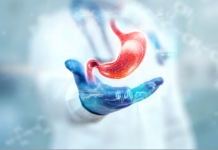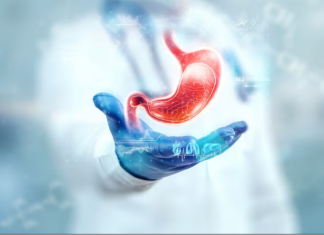Pain is experienced by everyone. Whether it presents as a headache, ankle sprain, abrasion, abdominal pain, or a cramp, pain is an uncomfortable sensation. Dull or sharp, piercing, burning, shooting, aching, or throbbing, the location of the pain and the way it feels can help to diagnose what the problem is. Pain is a signal, a warning, to the conscious mind that there is something wrong with the body. Sometimes the problem is minor, and it and the pain go away spontaneously. Gas pains, tension headaches, and muscle strains are examples of this temporary type. But sometimes the problem is more severe, and the pain doesn’t go away.
There are two categories of pain based on time: Acute and Chronic
Table of Contents
Acute pain is generally a new phenomenon for your body. The pain may have occurred previously to some extent, but this is a new episode. It can come on strong or it can start as a little discomfort that gets worse over time. It can vary in sensation. It can be constant, or it may come and go. The pain does not last more than a few months. Chronic pain can last for many months or years. Seeing a doctor is necessary more often when the pain is chronic.
When do you need to see a doctor or call 911 with acute pain?
The best answer is: it depends. Let’s consider some scenarios.
Severe Pain of Several Hours Duration
It doesn’t really matter where the pain is located or whether or not there was an injury, severe pain needs to be evaluated by a doctor when it persists for more than an hour. Take advice from opa orthopedics Seattle will be more advisable in this concern.
Acute Pain Associated With Other Symptoms
If the pain is persistent over several hours, associated with other symptoms such as shortness of breath, nausea, vomiting, fever, chills, cold sweats, muscle weakness, or numbness, it needs to be checked out – sooner than later.
Acute Pain Known to Be Associated With Life-Threatening Problems
-Chest pain, especially heaviness or pressure, is the best example. This pain is considered indicative of a cardiac event and should be a signal to go to the ER immediately, or preferably call 911.
-Right lower quadrant abdominal pain, especially in a child, sometimes associated with nausea and vomiting, is often associated with acute appendicitis. The person should be taken to the ER immediately.
-Moderate to severe neck pain associated with neck stiffness and often with headache can be a sign of meningitis. If there is a fever as well, call 911.
-These are just a few of the warning pains that can indicate serious or critical abnormalities developing in the body.
Basically, go to the ER or your doctor any time you feel that the pain you’re experiencing is getting worse, has gone on too long, or new symptoms are developing.
So When Do You Go to the Doctor for Chronic Pain?
Usually, unless there is an acute change for the worse in your chronic pain, you can set up an appointment with your primary care doctor for evaluation. You do not have to go to the ER.
Again, deciding when to see a doctor about your pain depends on a number of variables. Watch for the following occurrences
A change in chronic pain, especially worsening.
-Many people have chronic back pain that gets worse when they do yard work or heavy lifting. If this is the case, Physiotherapy Brisbane is your best option for treatment. The worsening is usually due to minor strain on the muscles and improves with rest and ice packs or hot soaks. If the pain worsens for no apparent reason, especially if it becomes moderate to severe, you need to see your doctor.
-Other types of chronic pain include pain in the hands, wrists, elbows, shoulders, knees, and ankles/feet. These joints can be affected by osteoarthritis, rheumatoid arthritis, and auto-immune disorders such as lupus.
-Life is movement and motion of the joints can result in injuries such as rotator cuff tears in the shoulder, ACL and meniscal tears in the knee, tendon tears and bursal inflammation in the hip. These injuries can cause chronic joint problems and pain if not treated.
There definitely are circumstances where you don’t need to see a doctor, and there are things in your power to influence that can help save you the trouble of expensive surgery. Things like weight loss and physical therapy can do wonders to help relieve body pains. Diet restrictions based on allergic reactions to food can do a lot to improve health and remove inflammation.
Even if you need surgery (like for your knees and joints) being healthy can make a big difference. According to the Texas Health Center for Diagnostics and Surgery, “Orthopedic surgeons agree that outpatient TJA should only be done on patients who are healthy enough to have surgery in such setting and have the appropriate home setting/support to allow them to be discharged in this manner.”
Pain is a signal that something is wrong. You need to pay attention to what your body is telling you. Don’t let acute pain go on for too long before you seek help. That can lead to long-term problems. If your abdomen starts hurting and the pain is still there after a few hours, go to the ER. If you have chest pain, do not assume it is indigestion and ignore it. Get an evaluation. Right away.
If your chronic wrist pain gets acutely worse, see a doctor. So many problems can be resolved if they are brought to light early. Don’t wait too long. See your doctor get better.










